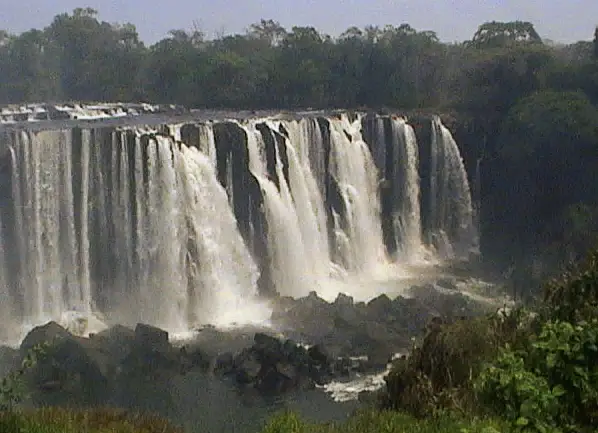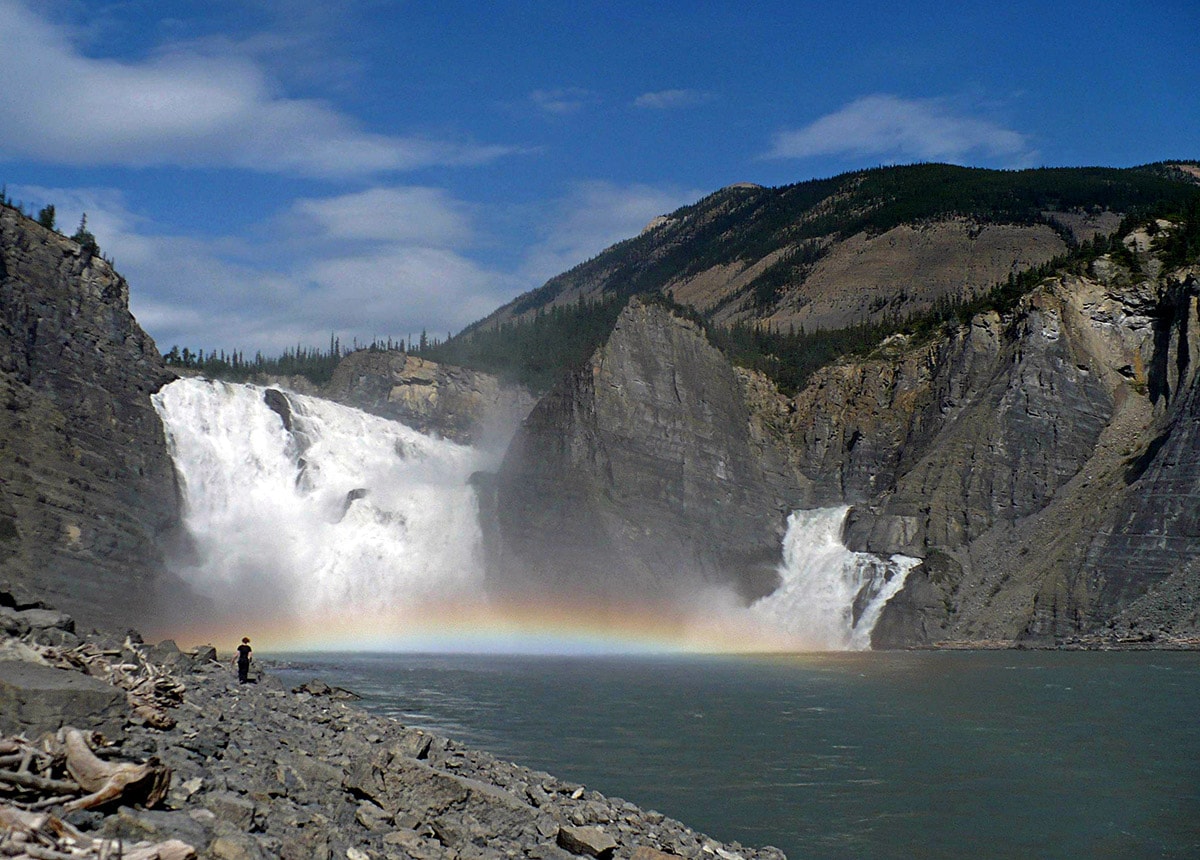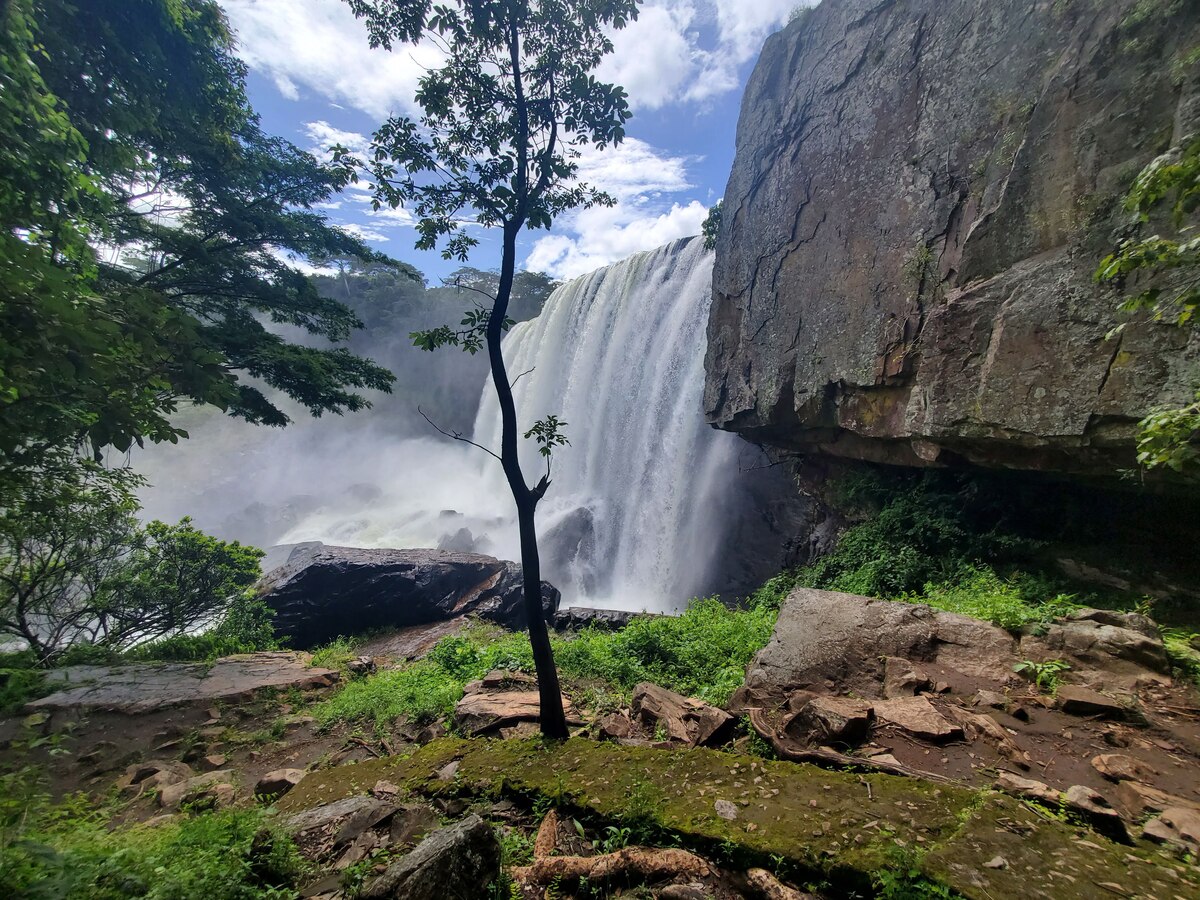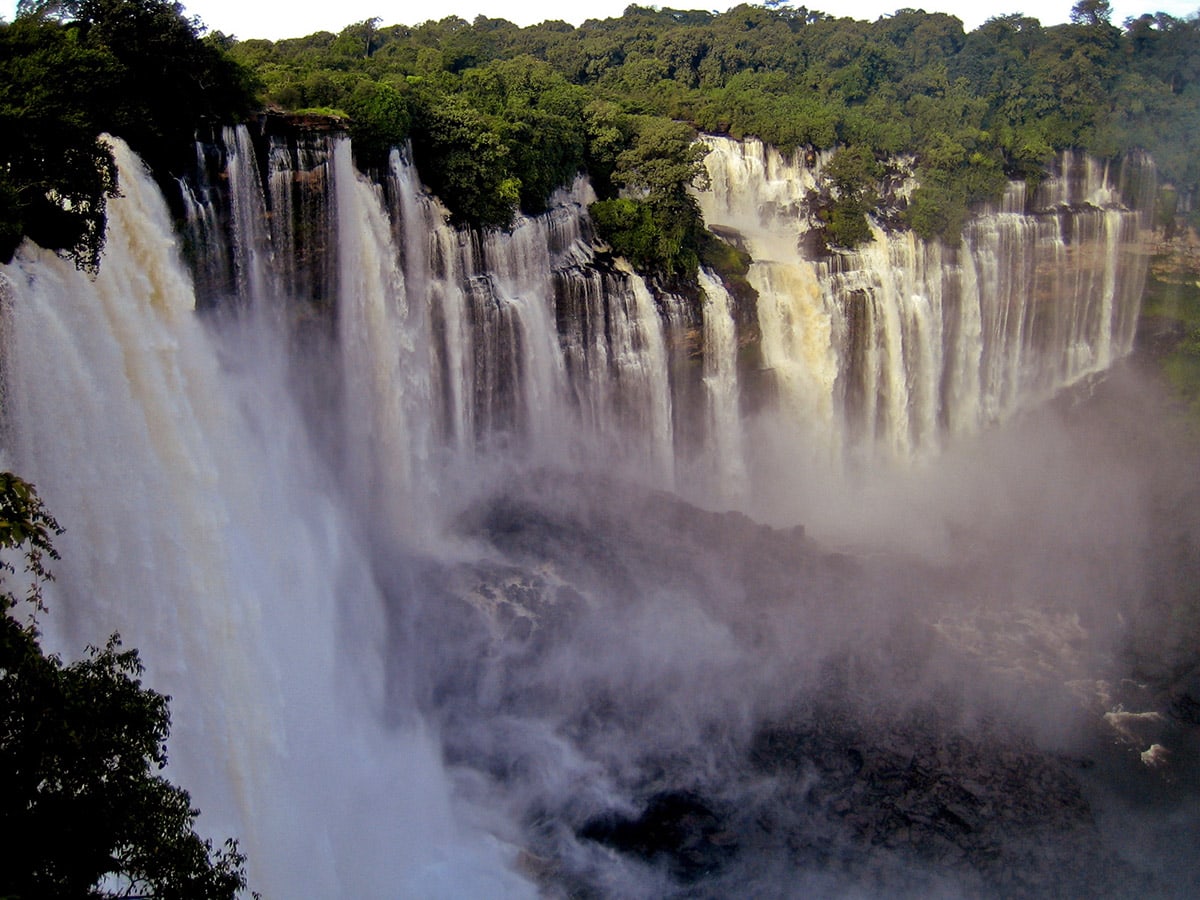Waterfalls 🢔 Geological wonders 🢔 Categories of wonders
Wonder
Lumangwe Falls

 In short
In short
One of the largest waterfalls in Zambia is Lumangwe Falls. This waterfall is approximately 30-40 m tall and some 160-200 m wide.
 45.8%
45.8%
GPS coordinates
Location, address
Map of the site
If you see this after your page is loaded completely, leafletJS files are missing.
 In detail
In detail
The best known Zambian waterfall – Victoria Falls – in fact, is shared with Zimbabwe. The largest waterfall fully inside Zambia is Lumangwe Falls, and, surprisingly, it is somewhat similar to Victoria Falls, although considerably smaller.
Description of falls
Lumangwe Falls have formed on Kalungwishi River – a fairly large river that flows through miombo woodlands – dry tropical shrubland with sparse trees. This river has several magnificent waterfalls over a short distance: Chimpepe Falls, then Lumangwe Falls, and then – the gorgeous Kabwelume Falls with several smaller steps in between. All three waterfalls are included in a national monument, and Lumangwe Falls are protected since 1964.
Waterfall has formed on quartzite and red-colored siltstone.
Lumangwe Falls at first have several smaller steps and then comes the main plunge. During the dry season, the curtain of falling water is divided into multiple smaller parts but in April-May, when the rains come, the waterfall forms a giant curtain of falling water. But in the rainy season, it is harder to take images of the falls because the air is filled with mist that rises up to 100 m high.
The river in this area is some 70-90 m wide, but at the falls it becomes significantly wider. The rim of the falls is some 160-200 m wide, but, usually, it is assumed that the falls are some 160 m wide.
Island of rainforest
Below the falls has formed a small rainforest: the frequent mist around the falls allows surviving quite a rich community of moisture-lowing species, such as diverse epiphytic plants. This is a kind of biodiversity hotspot with several species that are known only from this locality – diatoms, fungi, ferns, and some others.
Thus, for example, below the falls is the only known find of the unusual Zygotritonia atropurpurea – an up to 1.3 m tall plant with small purple flowers.
History
To local communities this waterfall has been a sacred place and due to this, for long years this natural monument was off-limits to tourists. The name of the waterfall comes from the snake spirit Lumangwe who is told to be stretched between Lumangwi and Kabwelume Falls.
There are gruesome stories about the sacrificing virgins by pushing them over the falls that, reportedly, continued until 1935. (1)
Until recent times this wonderful waterfall was not too touristy – which is both good and bad because it has maintained its natural charisma and there are no crowds, and at the same time – not everyone would be happy with the basic services.
Currently, there is a plan to develop the tourist infrastructure around these and other falls in this region. Additionally, there is a partly realized plan to develop the Kalungwishi Hydroelectric Project with a yield of 247 MW. This project envisages two power plants – one at Kundabwika Falls and the other at Kabwelume Falls.
References
- Mich Bond, From Northern Rhodesia to Zambia, Recollections of a DO/DC 1962-73. Lusaka, 2014. ISBN 9789982240901. 56. page.
 Linked articles
Linked articles

Waterfalls
Some of the most fascinating and awe-inspiring natural monuments are waterfalls or locations where a river abruptly changes its elevation.

Wonders of Zambia
Highlights of Zambia are waterfalls, including one of the greatest natural monuments of the world – Mosi-oa-Tunya or Victoria Falls. There are countless other impressive waterfalls in the country, such as Kalambo Falls, Lumangwe Falls, and many others. Another highlight is prehistoric rock art. In the country have been found hundreds of sites with prehistoric paintings and engravings. This art shows people and animals, but often also – geometric symbols.

Wonders of Africa
Africa has many outstanding wonders and some of the most surprising ones are the heritage of Egyptian civilization, the vernacular architecture of the Sahel region, tropical ecosystems, and others.
 Recommended books
Recommended books
To the banks of the Zambezi
Bulpin transports the reader to the mystical country Rhodesia, today known as Zimbabwe. In his remarkably engaging and romantic style of writing, he tells of stories long forgotten, played out at the foot of the majestic Victoria Falls and along the banks of the Zambezi, the greatest river in Africa. As the Zambezi River twists and turns its way through the beautiful landscape, it is witness to prospecting, hunting, wars, and dreams; and hears of great men who explore the undiscovered land – heroes and villains alike.
The Zambezi: A History
The Zambezi is the fourth-longest river in Africa, and one of the continent’s principal arteries of movement, migration, conquest, and commerce. In this book, historian Malyn Newitt quotes rarely-used Portuguese sources that throw a vivid light on the culture of the river peoples and their relations with the Portuguese creole society of the prazos.


